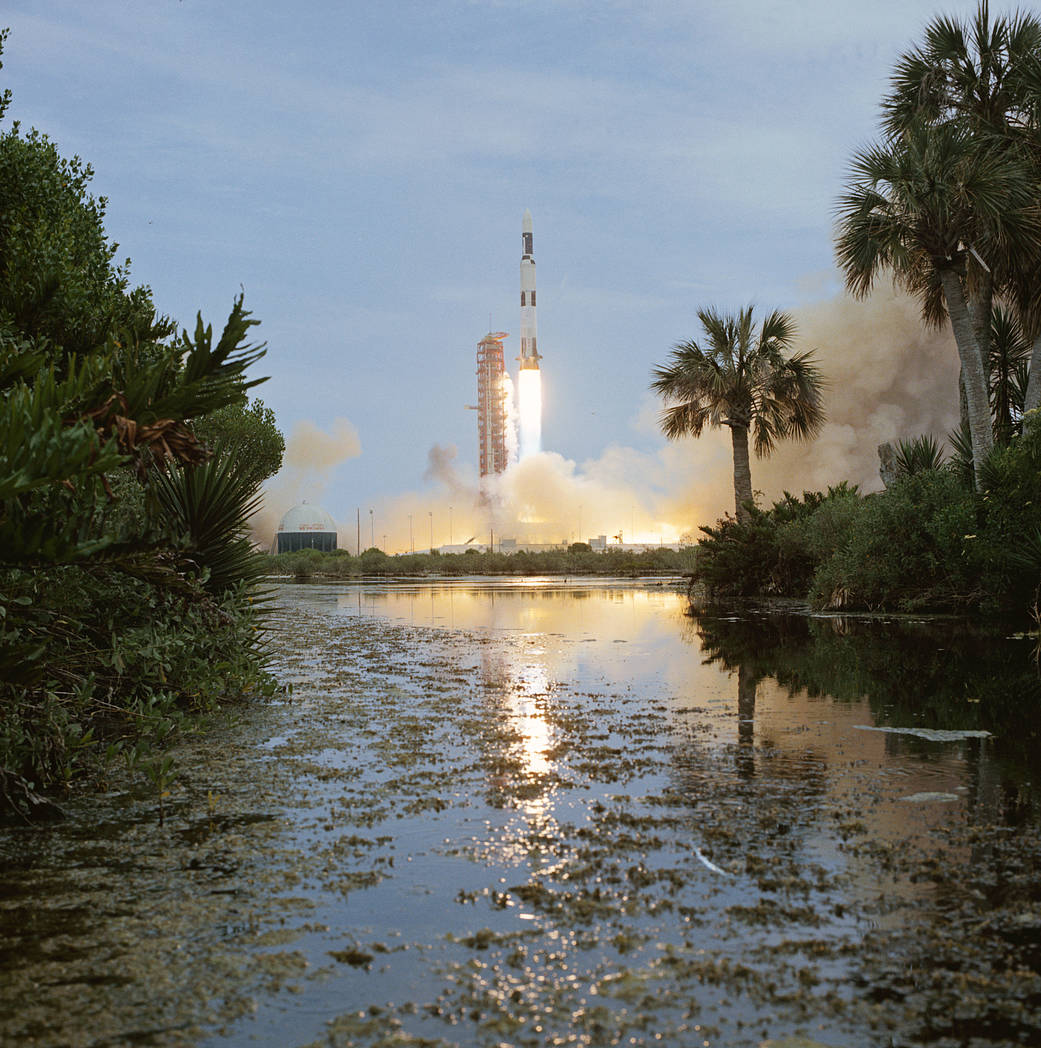Clouds of smoke billow out over the surrounding area as the uncrewed Skylab 1/Saturn V space vehicle launches from NASA’s Kennedy Space Center on May 14, 1973. The Skylab 1 payload included the major components of the space station: the orbital workshop, Apollo Telescope Mount, multiple docking adapter, and airlock module. The Skylab 2 crew was scheduled to launch to the space station the following day aboard the Apollo Command and Service Module.
Skylab helped pave the way for permanent operations in low-Earth orbit. Over the course of its human occupation from May 25, 1973, to Feb. 8, 1974, three crews visited Skylab, carrying out 270 scientific and technical investigations in the fields of physics, astronomy, and biological sciences. These activities were forerunners of what we do now aboard the International Space Station.
Image Credit: NASA
1973年5月14日,在NASA肯尼迪航天中心,无人驾驶的天空实验室1号/土星5号宇宙飞船发射升空,周围地区浓烟滚滚。天空实验室1号的有效载荷包括空间站的主要组成部分:轨道车间、阿波罗望远镜底座、多个对接适配器和气闸舱。天空实验室2号机组人员计划于次日乘坐阿波罗指挥与服务舱前往空间站。
太空实验室为在低地球轨道上的永久运行铺平了道路。从1973年5月25日到1974年2月8日,三名宇航员访问了太空实验室,在物理学、天文学和生物科学领域进行了270项科学和技术研究。这些活动是我们现在在国际空间站上所做的工作的先驱。
影像来源:NASA







